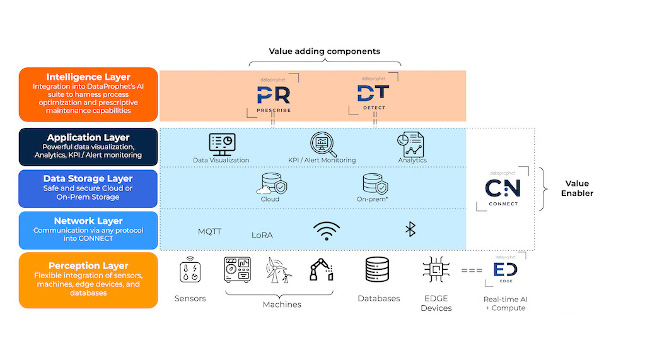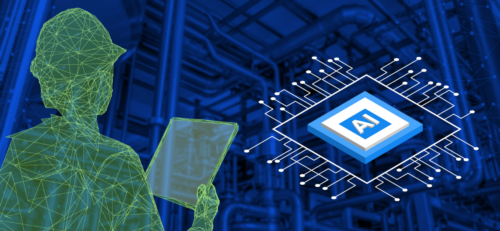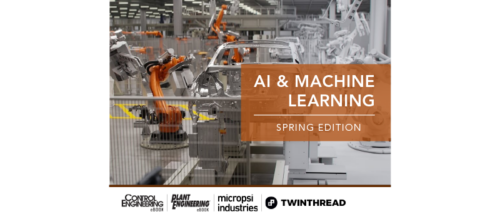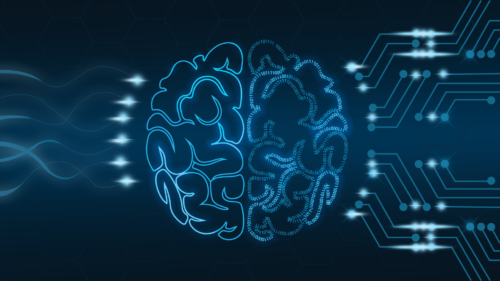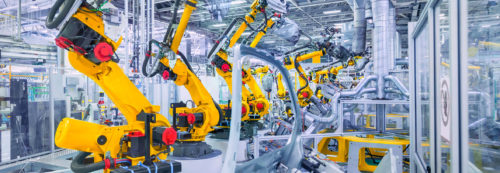Why automating AI-as-a-service is now mission critical
AI-as-a-service (AiaaS) combines an AI-ready IIoT platform with automating deep learning intelligence to help accelerate the realization of the greater manufacturing mission.
It is worth remembering manufacturers such as machine builders and original equipment manufacturers (OEMs) preside over the engine room of industrial creation. The collective fundamental role of plant teams is to craft sophisticated physical materials and objects in motion. There is no shortage of punditry about the urgency of adopting Industry 4.0 technologies for the digital transformation of industry. To be sure, many of these technologies offer stand-alone viability for myriad advanced production scenarios.
And yet, any new technology factories implement to evolve manufacturing processes is only as effective as its relative positive impact on material flow—through a plant’s production lines from shift to shift. It should deliver measurable improvements such as quality, capacity, overall equipment effectiveness (OEE) or all these traditional metrics. Such tangible improvements are the beginning of the successful journey to next-era production.
With the convergence of enterprise information technology (IT) and operational technology (OT) systems, manufacturers are turning to connectivity solutions and advanced analytics to achieve these key performance indicators (KPIs) better; industry leaders are also experimenting with AI. There is a good reason for this: data.
Adapting to a moving target with digital maturity
For last mile optimization, industrials feel pressure to make sense of the terabytes of data generated by industrial processes, while human expert capacity alone is not sufficient. Semiconductor fabs are an extreme example of this technical challenge, but the same is true of any advanced production environment—data utilization from the edge of production is vital.
A plant establishes sufficient data exfiltration, preprocessing, visualization, and traceability to accomplish it. Only then can it take the next step on the digital journey. This second step determines the improvements to production processes mentioned above have one crucial dimension: adaptation. Why is adaptation indispensable for a manufacturing technology?
First, as the materials and functionalities giving form to industrial goods (and the machines that shape them) advance, so do the parameters that circumscribe production change and proliferate. Second, thanks to innovation, scientific discovery, cultural shifts, and global-environmental forces—old products will evolve and new ones will continue to be invented.
A critical measure of the value of any Industry 4.0 technology integration is its holistic contribution—to new or established production processes that are evolving.
However, as critical as continual adaptivity for industrial transformation is, it is not enough to fulfill manufacturing’s greater mission.
Data-driven innovation at scale
Manufacturers’ official and undisputed call to action is to reimagine their fundamental operations. This inevitable progression is towards a tech-enabled reformulation of industry. Its catalyst is digitally scaled innovation. Digitally led scaling is part of a broader shift in business. In essence, it is guided by the game-changing possibilities of data intelligence—already established in industries such as health and finance. Gartner’s VP Analyst, Mike Rollings, for example, determined operational transformation as necessary for all contemporary organizations, insisting they can only achieve it to the extent that data runs the show:
“…CDOs [chief data officers] need to work with business executives to identify data sources, data quality issues, types of analysis, and new work practices…. Many times this leads to the realization that data-driven opportunities cross organizational boundaries and require operating model changes to achieve the intended outcomes….”
In the absence of a CDO, Rollings still stresses the transformational importance to an organization of harnessing dedicated data expertise to successfully “adopt the tasks of prioritizing or leading its data and analytics strategies.”
New metrics needed in a new paradigm
Given these digitally grounded seismic shifts, let us imagine the future of smart manufacturing for a moment. It will likely be a pan-operational, self-optimizing ecosystem. Carbon neutral and functioning within the wider context of a circular economy.
Humans will need to be empowered to uplift their digital skills in the future. Digital skills recalibration of the workforce will be necessary as manufacturing professionals interface with intelligent machines. Controllers, operators, and teams for quality, production, and maintenance, will be involved in critical automation tasking, control system installation and migration, remote system monitoring, and other unforeseeable optimization projects.
In line with this vision, future manufacturing will also capture value with different metrics such as social and environmental benefit and scalability of digital capabilities. According to the 2022 WEF White Paper, “Unlocking Business Model Innovation through Advanced Manufacturing”:
“…companies need to leverage their investments in advanced manufacturing not only to optimize operating models but also to unlock new business models that create and deliver new value to all stakeholders, including the companies themselves, workers, society, and the environment.”
As with all great industrial inflection points, our current epoch goes beyond continual improvement for isolated use cases. Company-wide adaptations must occur beyond the level of discrete production events or even end-to-end operations. For manufacturers, this means thinking differently about available technology and the people who interface with it.
Two Industry 4.0 mindset shifts
Our industrial moment presupposes a cross-disciplinary collaborative approach. Departmental silos will be integrated and embedded in a mutually reinforcing network. Therefore, embracing the greater manufacturing mission calls for a strategic mindset shift that adopts and leverages new technology. It also stands to reason this change is proportionate—to the above-described expanding complexity and rapid technological advancement of industry. In practice, this new thought paradigm achieves two things:
- It puts manufacturing professionals in the driving seat of the leading edge where OT and IT merge.
- It enables industrials to redefine how they capture value in a way that flexes with an ever-shifting landscape.
Implementing a whole new business paradigm may sound like an ambitious ideal. Yet, as the WEF suggests (and as manufacturing lighthouses are showing), it begins at the production level. So, the right question is: How can advanced manufacturing act as the bellwether for more comprehensive industrial change?
It starts with a fully connected and intelligent production environment.
One connected layer at a time
There are four connectivity building blocks and they must be laid down for an adaptive IIoT platform to enable value.
First, at the layer of data perception, plants can ensure flexible integration of sensors, machines, edge devices (with real-time AI and compute capabilities), and databases.
The perception layer establishes a foundation from which an IIoT platform can successfully network, collect, and store its edge data.
Data is collected in various ways: via programmable logic controllers (PLCs), supervisory control and data acquisition (SCADA) systems, and manufacturing execution systems/quality management systems (MES/QMS). As for data storage, edge-to-cloud integration provides safety, security, and remote access for an evolving production environment. At the networking layer, experts can ensure seamless communication via numerous protocols.
However, a connectivity solution is not yet complete with perception, networking and storage in place. Full connectivity happens at the upper layer application. Application is where an IIoT platform executes its intelligence remotely. Notwithstanding AI deployment (see below), it does so at the human-machine interface (HMI).
At the HMI, a good connectivity platform enables centralized, real-time reporting and intuitively hierarchical data visualization. It also provides operators with analytics capabilities, alarms system integration and KPI monitoring.

Figure 1: At the HMI, a good connectivity platform enables centralized, real-time reporting and intuitively hierarchical data visualization. Courtesy: Dataprophet
However, if a manufacturing concern’s most important strategic objective is to embed technological innovation sufficiently to transform its operational model—full-plant connectivity is necessary, but not sufficient. Industrials need a technological intervention ready to execute next-era production at scale.
AI-as-a-service needs humans in the loop
In the face of increasing IT/OT complexity, in-house resource constraints such as worker attrition and digital skills gaps have become more pronounced. Therefore, it is essential to note achieving smart factory objectives is not merely putting together the proper IT and OT infrastructure combination. Plant managers and execs must ensure sufficient expertise to manage these technologies and optimally execute a digital transformation for new-era production.
AI-as-a-service (AiaaS) combines an AI-ready IIoT platform with automating deep learning intelligence to help accelerate the realization of the greater manufacturing mission. It does this at the production level by normalizing flexible, agile, and collaborative manufacturing. How does AiaaS work?
It begins with an AI-readiness assessment (a deep dive into a plant’s process and quality data systems). This exploration produces a clear report on maturity for prescriptive AI. Once digital maturity is established, the AI system is installed and pipelined from edge to cloud to network. A commissioning test demonstrates the impact of the AI system and quantifies its value. During the entire process, network engineers, IT systems owners, plant operations personnel, production operators and control engineers engage with external data scientists and software engineers. Plant teams collaborate to deploy a data-derived AI solution for, in the first instance, a particular production line against agreed KPI benchmarks. The process often takes between three and four months.
Upon completing the installation and commissioning test, the AIaaS provider ensures continued access, reports, training, support, full model maintenance and adaptive remodeling for the AI system.
Automation of ROI-insured manufacturing intelligence
Ideally, an AI-for-manufacturing deployment is an operational expenditure (OpEx) solution, which derives its value by extracting measurable ROI from data that factories already own. The most impactful AI for manufacturing environments is deep learning applied as prescriptive analytics.
It parses live and historical data from a learned manifold of production to discover optimal operation regimes. These are delivered as prioritized prescriptions for plant operators to enact proactive setpoint adjustments for the best possible production outcomes ahead of production loss. Everything is achieved without forestalling production or putting it at risk.
Manufacturers who harness deep learning prescriptions can continuously drive immediate and measurable process and machine health improvement. They can achieve this because the best AI deployments create a production feedback loop whereby the system learns with each iteration of the process—automating root cause analysis and embedding expert execution, which become part of the system’s dynamic, growing intelligence.

Figure 2: Manufacturers who harness deep learning prescriptions can continuously drive immediate and measurable process and machine health improvement. Courtesy: Dataprophet
Aligning teams around scalable AI
These AIaaS deployments also align previously siloed teams. Production, quality, maintenance, plant operators, and process engineers interact daily with a centralized, self-consistent system.
Furthermore, scalability is built in. Deep learning is inherently manufacturing process agnostic, its fuel source being high-quality industrial data. As a result, once it has proven its efficacy across a production line or a piece of manufacturing equipment, it can be rolled out to other duplicate or similar lines. Industries also can apply it with comparable impact to new products and product variations, which future-proofs AI-driven production for greenfield operations where quick ramp-up is critical.
Scaling deep learning innovation
To leverage the captured value of this scaled, end-to-end digital transformation of production—next-level innovation must extend into the entire value chain. Extending AI implementation end-to-end can further minimize operational costs to improve margins across the value chain. Furthermore, it can do so continually with the right strategic deployments.
In the WEF’s view, careful planning positions manufacturers to leverage their core manufacturing strengths and compete with more digitally oriented companies.
With AI-ready data layering and AI-driven optimization working at the factory-fleet level, data-driven value enablers are more readily achievable elsewhere. These enablers include product demand forecasting and dynamic production planning. Experienced data scientists can adapt the automating intelligence of AI to fulfill orders in the face of supply-chain volatility, using the previously mentioned self-optimizing autonomous loop.
As for adopting new metrics to measure success, deep learning applied as prescriptive analytics is a fitting technology. Capturing data and sustaining an autonomous feedback loop establishes a working model for perceiving production problems (and, by extension, operational issues) differently.
Sustainability, for example, is not far removed from any conventional production objective—running more efficiently, reducing scrap or increasing the working life of a line can be pegged to sustainability goals. Deep learning is good at recognizing inherent bias in a production regime. In this instance, AIaaS providers can work with plant personnel to discover a regime that maximizes accurate OEE measurements without compromising quality or throughput.

Figure 3: Deep learning is good at recognizing inherent bias in a production regime and can maximizes accurate overall equipment effectiveness (OEE) measurements without compromising quality or throughput. Courtesy: Dataprophet
Machine builders, OEMs and tier-1 suppliers can apply the same functionality to other novel metrics aligned with the greater manufacturing mission. Examples might include the speed of infrastructure development, digital capabilities evolution, and social-environmental impact. As discussed, AIaaS drives digital capabilities and forges system-wide collaborations.
Mission critical and systems practical
Manufacturers need to reinvent how they define and capture value in a shifting landscape. The impact of digital innovation needs to be measurable at each stage. Establishing digital maturity and sustaining the intelligent systems of AIaaS execution guarantees ongoing ROI. Beyond this, it positions advanced manufacturers to pursue their broader purpose and quantify it along the way by aligning commercial, social, environmental and customer benchmarks and capturing rolling value as the business evolves.
Once proven in production environments, applications of AI can become more strategic and bolder as industrials consolidate the accumulated know-how of their tactical implementations. For AI to be a force multiplier, manufacturers must scale use cases and extend them into other areas of the organization—gauging the sweet spot of feasibility and impact across the value chain.
Do you have experience and expertise with the topics mentioned in this content? You should consider contributing to our CFE Media editorial team and getting the recognition you and your company deserve. Click here to start this process.

